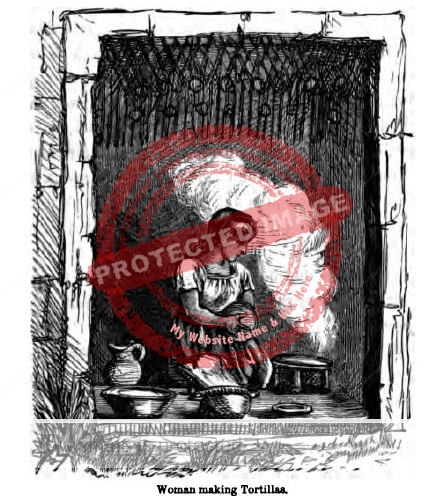Rose Georgina Kingsley (1845-1925) was the oldest child of the Rev. Charles Kingsley, the celebrated English clergyman and novelist, who contributed the prologue to her book South by west or winter in the Rocky Mountains and spring in Mexico.
Rose Kingsley had crossed the Atlantic to Colorado Springs in November 1871 to join her brother, Maurice, who was assistant treasurer of the company developing Colorado Springs. Even by 1872, there were less than 800 residents, so both Kingsleys were pioneer settlers.
The founder of Colorado Springs, General William Jackson Palmer, a railway entrepreneur, also owned a newspaper Out West which published several columns and sketches by Rose Kingsley. The Denver and Rio Grande train had been operating for only a week when Rose Kingsley boarded it en route to Colorado Springs. She quickly felt at home and rapidly made friends in the ever-changing community that she grew to love. She taught in the local school, begun by Palmer’s wife, Queen, for a short while, but did not enjoy the experience. Little did she realize at that time that she would, in 1884 – with the help of Dr. Joseph Wood, later Headmaster of Harrow – found The Kingsley School, in Leamington Spa, England. Rose Kingsley went on to write many more books, including A History of French Art, 1100-1899 (1899) and Roses and Rose Growing (1908).
When General Palmer decided in 1872 to examine possible routes for a railway linking Texas to Manzanillo, Rose Kingsley was invited to join his wife Queen and General William Rosencrans on the trip. The group landed in Manzanillo and then headed inland to Colima, Guadalajara, Guanajuato, Querétaro and Mexico City.

Illustration from Rose Georgina Kinsley’s South by West
In chapter XVII of South by west or winter in the Rocky Mountains and spring in Mexico, Kingsley describes the route from Guadalajara past the northern shore of Lake Chapala on the way to Mexico City. Following a common convention of the time, she uses only initials to identify important people; several of the individuals referred to have been identified by historians. For instance, “Mrs. P.” is Mrs Queen Palmer, and Mr. C. is Mr. Duncan Cameron. Kingsley’s account of this route serves as an introduction to set the scene for so many other travelers, who would follow this exact same route from Guadalajara to Chapala in years to come. It is 1872…
“April 13.— Guadalajara to Ocotlan. At 6.15 A.M. we left hospitable Guadalajara, carrying away none but the pleasantest reminiscences of our stay of six days.
Pablo, a pleasant young fellow, who had been our cochero in Guadalajara, came with us as mozo, and was in a state of supreme delight at being armed with a Henry rifle and revolver. Mr. M. also came with us as far as La Barca.
The usual route from Guadalajara to the capital is by La Venta, Lagos, Leon, and Guanaguato; but for two reasons we chose the more southern route, past Lake Chapala and up the Rio Lerma. First, because the engineer’s party from the north (of whom we had heard nothing as yet, which made us very anxious) must pass along that route, and so be able to give a report on it. Secondly, because we were told the Chapala route was shorter and better, if there can be anything “better” in one Mexican road than another. Certainly, after the first few miles it was bad enough—rough and stony, and in the softer places there were clouds of dust.
At San Pedro [Tlaquepaque] we stopped and got three men as escort, and at 9.30 came to San Antonio, a hacienda where we changed mules, and had breakfast in a hut by the roadside. The women in the hut, which was only made of sticks and thatch, gave us eggs, frijoles, tortillas, and carne seca, in chilli colorado sauce, which for hotness almost beat the mole de guajalote at Atenquique. But besides these native viands we got capital chocolate, made from some cakes we had brought with us. So, on the whole, we fared well.
At 12.15 we came to the summit of a small pass (4850 feet), and there before us lay a splendid valley, rich with golden wheat-fields, with a fine river flowing through it on our left to the north-west; and we knew we had struck the great central valley of Mexico, commonly known as the Valley of the Lerma.
This valley is one of the richest portions of the Republic. Its length, between Guadalajara and Queretaro, is about 230 miles, and its greatest width (between Leon and the mountains of Michoacán), 60 miles. About one-tenth of the available land in it is under cultivation. Wheat, maize, and beans grow freely without irrigation, yielding good crops year after year without the slightest pains being taken to improve the soil. With irrigation and better farming two crops might be obtained; and when a market for the produce, and easy means of transportation are supplied, this tract will become one of the most important wheat-growing districts of the world. The amount of wheat which could be raised in this valley alone has been variously estimated from 500,000 to 1,000,000 tons yearly, equal to or surpassing the whole yearly yield of California.”
This is an extract from chapter 30 of “Lake Chapala Through the Ages: an anthology of travellers’ tales”, available as either as a regular print book or a Kindle e-book.
Note: This post was first published 22 April 2012.
Comments, corrections or additional material related to any of the writers and artists featured in our series of mini-bios are welcome. Please use the comments feature at the bottom of individual posts, or email us.
Tony Burton’s books include “Lake Chapala: A Postcard History” (2022), “Foreign Footprints in Ajijic” (2022), “If Walls Could Talk: Chapala’s historic buildings and their former occupants” (2020), (available in translation as “Si Las Paredes Hablaran”), “Mexican Kaleidoscope” (2016), and “Lake Chapala Through the Ages” (2008).
This is interesting.